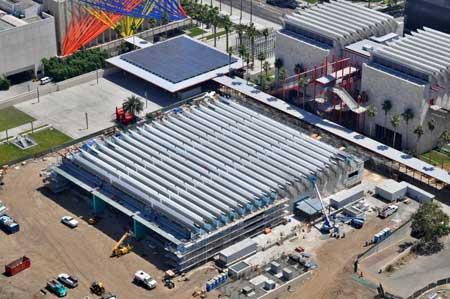Today marks precisely one year since we announced the construction of the Lynda and Stewart Resnick Exhibition Pavilion (and was also, by the way, the day Unframed made its first post). To mark the occasion we thought we’d check in on the building and see how it’s progressing.
We’re exactly at the halfway point. This time next year, the Resnick Pavilion will be open to the public with a few exhibitions open at once, including the debut of our eighteenth- and nineteenth-century European costume collection which we acquired last year.
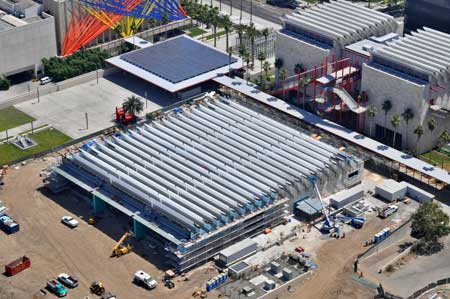
Looking at the building it feels like we’re more than halfway—and indeed by the spring the pavilion will look and feel finished from the outside (though we’ll still be working on some of its finer points). If you’ve been by the museum lately you’ll have noticed that all the scaffolding is down and you can get a pretty good peek into the building’s wide-open interior. The Resnick Pavilion spreads across 45,000 square feet—just over an acre—and will have no permanent interior walls, which will allow us to configure the interior galleries to accommodate any kind of exhibition and any number of exhibitions at a time.
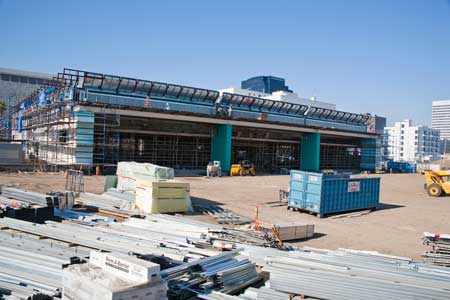
You might notice that the north wall of the building is missing at the moment. That’s because it won’t be travertine marble like the rest of the building. Instead, it will be a massive wall of glass which, along with the saw-tooth roof, will make the light in the building quite dramatic. I’ve had the opportunity to take a hard hat tour of the building and already you can feel the perfectly attuned quality of light inside.
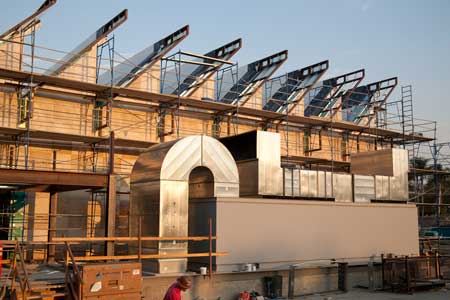
One of the more eye-catching construction activities right now are the air ducts being installed on the exteriors of the east and west walls. When these are finished they will be covered in a red fiberglass shell, matching the red of BCAM’s escalator, the BP Grand Entrance, and the Kendall Concourse running between the two buildings.
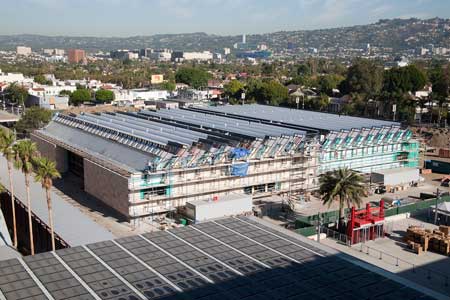
You might also notice that the travertine marble walls seem to come to an end about three feet above the ground. (It’s hard to get a good shot of this without getting onto the construction site, but even in this photo taken from a distance, you can see that the marble does not extend to the ground.) When construction is finished you won’t notice that: the landscape will be built up to meet the pavilion. Part of the reason we’re doing that is to add enough earth so that the palm trees hand selected and placed by Robert Irwin have enough room to grow.
There are plenty more fascinating details about this building; as construction continues and the opening approaches, we’ll continue to fill you in on some of the highlights.



